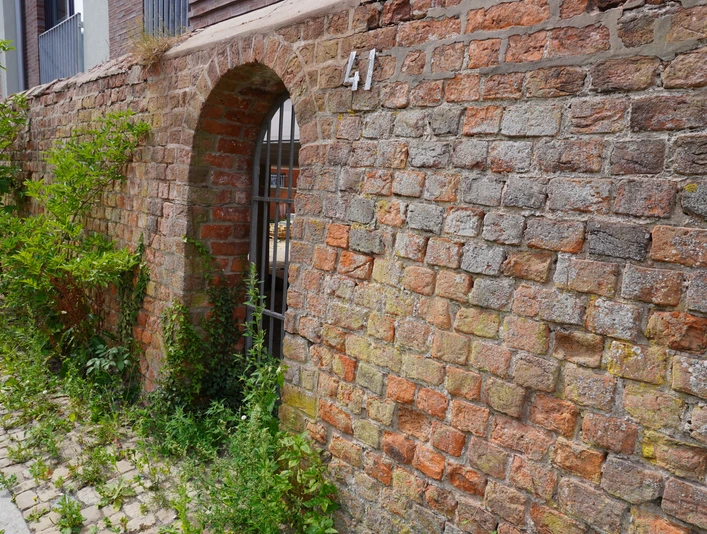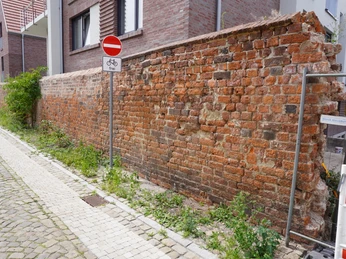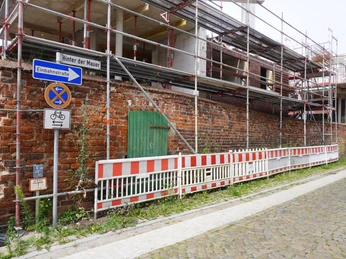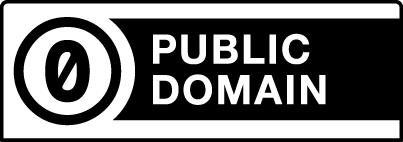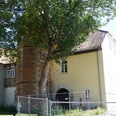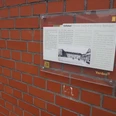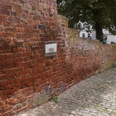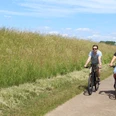Around 1220/1230, Bishop Yso (1205-1231) had a brick city wall built around the northern part of Verden, as this was the administrative seat of the bishop's bailiwick. The bricks came from the former Ratziegelei. The remaining part of the wall once also served as flood protection. The original wall was around six meters high.
For centuries, the wall of the Norderstadt formed the boundary against the open countryside. A merchant settlement developed here around the town hall. The city wall had several defense towers and four gates: Nordertor (towards Bremen), Ostertor (Heide), Brücktor (Marsch) and the Südertor as a customs post and connection to the Süderende, also called Süderstadt after 1651.
Coming from the Aller in the west, the once southern part of the city wall of the Norderstadt ran along today's Predigerstraße, crossed the Große Straße and continued along Nagelschmiedestraße and through Schleppenföhrerstraße. The wall of the Süderstadt joined that of the Norderstadt in this street from 1371 to form a common protection against the open areas to the east.
The Süderstadt with the cathedral, the main town of the diocese of Verden, was not given a stone ring wall until around 1350. A second wall was saved between the two towns. Here, the city wall of the northern city served as a so-called inner wall. Both walls protected the citizens from external threats, but also had a separating function.
In 1667, the two halves of the city were united by decree at the behest of the Swedish sovereigns. The south gate and parts of the city wall were torn down.
The walls were demolished at the end of the 18th and beginning of the 19th century. They had lost their function due to the advent of firearms. Some fragments from the 13th and 14th centuries can still be seen today.
For centuries, the wall of the Norderstadt formed the boundary against the open countryside. A merchant settlement developed here around the town hall. The city wall had several defense towers and four gates: Nordertor (towards Bremen), Ostertor (Heide), Brücktor (Marsch) and the Südertor as a customs post and connection to the Süderende, also called Süderstadt after 1651.
Coming from the Aller in the west, the once southern part of the city wall of the Norderstadt ran along today's Predigerstraße, crossed the Große Straße and continued along Nagelschmiedestraße and through Schleppenföhrerstraße. The wall of the Süderstadt joined that of the Norderstadt in this street from 1371 to form a common protection against the open areas to the east.
The Süderstadt with the cathedral, the main town of the diocese of Verden, was not given a stone ring wall until around 1350. A second wall was saved between the two towns. Here, the city wall of the northern city served as a so-called inner wall. Both walls protected the citizens from external threats, but also had a separating function.
In 1667, the two halves of the city were united by decree at the behest of the Swedish sovereigns. The south gate and parts of the city wall were torn down.
The walls were demolished at the end of the 18th and beginning of the 19th century. They had lost their function due to the advent of firearms. Some fragments from the 13th and 14th centuries can still be seen today.
Good to know
Author
Mittelweser-Touristik GmbH
Lange Straße 18
31582 Nienburg/Weser
Organization
Mittelweser-Touristik GmbH
License (master data)
Mittelweser-Touristik GmbH
Nearby
